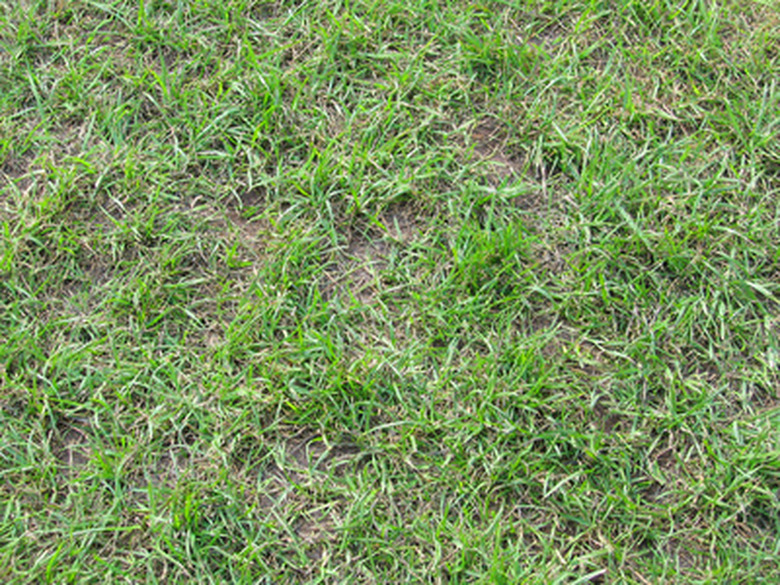Grass That Will Grow In The Shade In The South
Shade trees provide a cool spot to relax on a hot day, a place to hang a child's swing, and a home for birds and squirrels. For all the beauty they add to a yard, shade trees can make it difficult to grow a beautiful lawn. Some popular varieties of grass grow poorly in the shade, resulting in bare spots. Choose shade-tolerant grasses to solve this problem.
St. Augustine
St. Augustine grass (Stenotaphrum secundatum) is a tropical species popular throughout the southern United States. A medium-green to dark-green grass with long leaves, each with a deep central vein, St. Augustine spreads by means of runners to form a thick carpet on the lawn. St. Augustine doesn't tolerate very cold winters or dry summers but will thrive in hot climates as long as it receives sufficient water (1 to 2 inches a week). Horticulturalists at Texas A&M University recommend fertilizing St. Augustine with 1 lb. of high nitrogen fertilizer per 1,000 square feet of turf each month during growing season. For best results in shade, keep the mowing height of the grass at 3 inches and mow every 10 days.
- Shade trees provide a cool spot to relax on a hot day, a place to hang a child's swing, and a home for birds and squirrels.
- St. Augustine doesn't tolerate very cold winters or dry summers but will thrive in hot climates as long as it receives sufficient water (1 to 2 inches a week).
Zoysiagrass
Zoysiagrass (Zoysia sp) tolerates light to moderate shade. This fine-textured, dark green grass with small, stiff blades has a velvety appearance when mowed short. Clemson University recommends Cavalier, Diamond, El Toro and Belaire as the best varieties for shady conditions. Zoysiagrass is very drought tolerant, requiring less than 1 inch of water a week. Shade-grown grass needs more nitrogen than grass grown in full sun. Texas A&M recommends 1 lb. of nitrogen per 1,000 square feet of turf monthly during the spring and summer. Allow zoysiagrass grown in shade to grow taller than 2 inches and mow weekly.
- Zoysiagrass (Zoysia sp) tolerates light to moderate shade.
- Zoysiagrass is very drought tolerant, requiring less than 1 inch of water a week.
Tall Fescue
Tall fescue (Festuca arundinacea) is a cool-season grass that tolerates heat and drought well and grows well in shade. Fescue grows in bunches or tufts, so it should be thickly planted when used for lawns. The thin, upright blades of tall fescue are a medium green color. It will survive colder winters and experiences its main period of growth in spring and fall, lying dormant during the heat of summer. Tall fescue is suitable for the northern parts of southern states such as Arkansas, Missouri and North Carolina. Texas A&M recommends watering tall fescue only when the plants show sign of stress, such as leaf rolling or wilting. Then water slowly, soaking the soil to a depth of 3 or 4 inches. The University of Missouri recommends fertilizing tall fescue in the fall for best results, with 1 lb. of nitrogen per 1,000 square feet of turf. Allow tall fescue to grow to 4 inches in the shade and mow weekly.
- Tall fescue (Festuca arundinacea) is a cool-season grass that tolerates heat and drought well and grows well in shade.
- Texas A&M recommends watering tall fescue only when the plants show sign of stress, such as leaf rolling or wilting.
